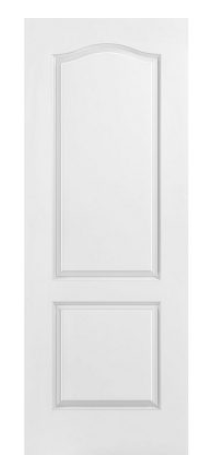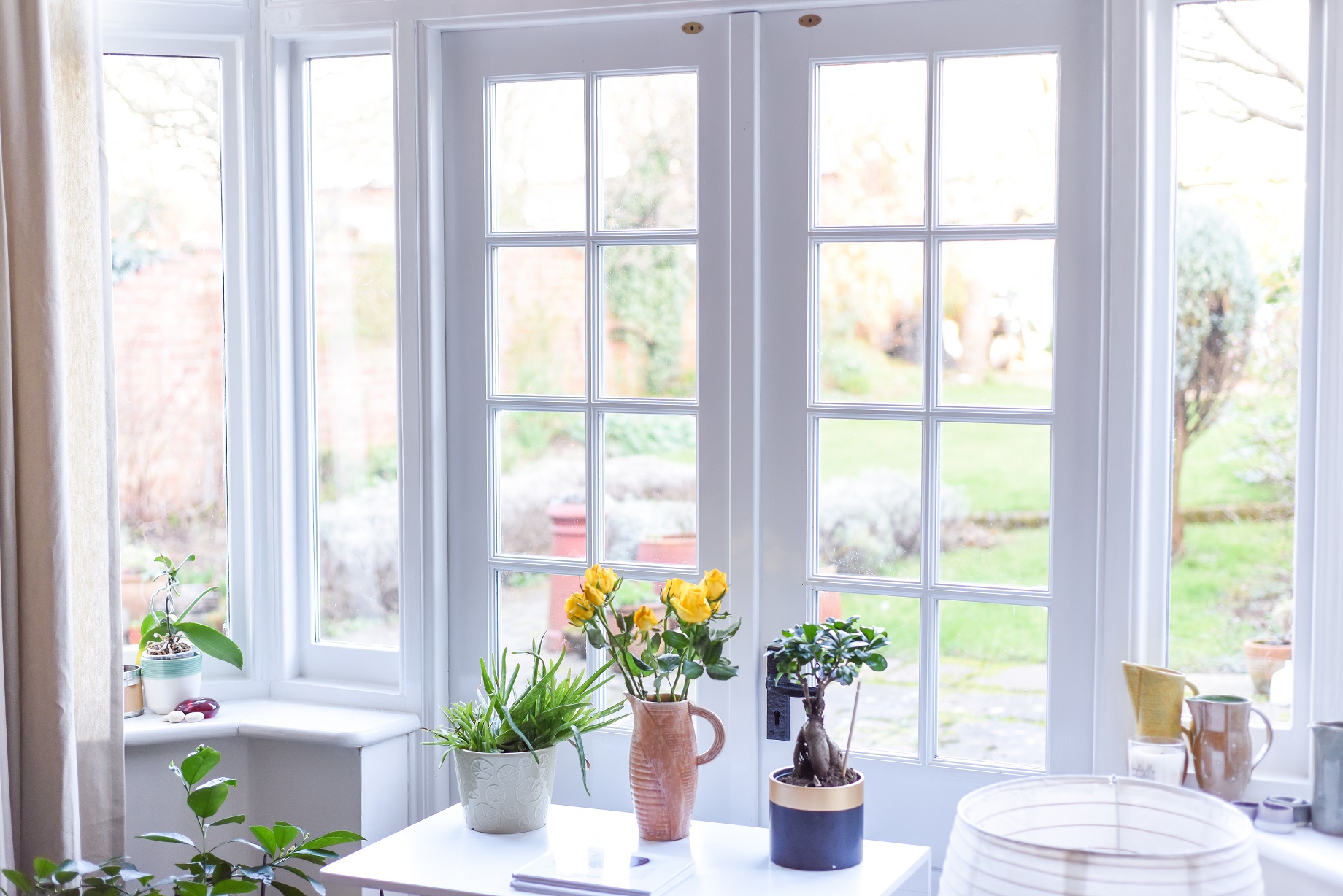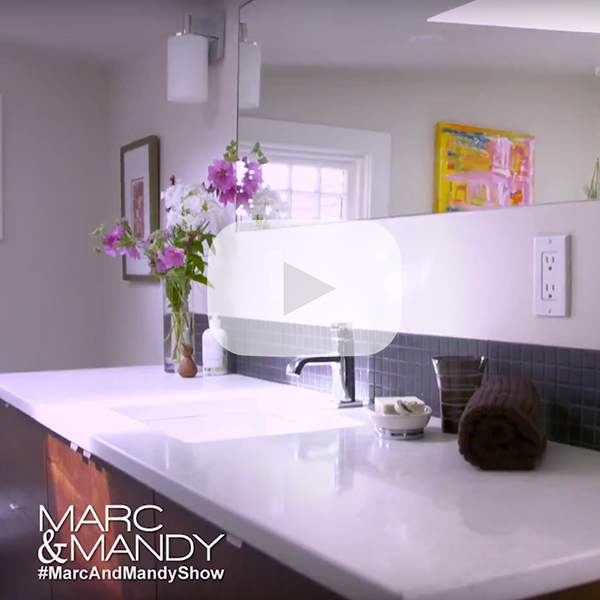Choosing new doors for your home can involve a surprising number of small decisions. On our podcast, All Things Renovation, we interviewed Brayden Stephenson from North Shore Door to get the lowdown on doors.
Interior doors
Interior doors open in a variety of ways:
- Swing doors – door swings open, bedroom and bathroom doors, some closet doors.
- Bypass doors – one door slides past the other, generally closet doors
- Pocket doors – door slides into the wall, generally bathrooms and narrow hallways
The handing refers to the direction that the door swings as it opens. A right-handed door has the hinges on the right, and swings to the right as you open it. A left-handed door has the hinges on the left, and swings to the left as you open it.

Door Handedness
Exterior doors
Exterior doors have similar opening methods to interior doors:
- Swing doors
- Sliding doors – patio doors
- Pocket doors
Handing is more detailed as exterior doors can swing into and away from the house. To make matters confusing, half of the industry labels doors as if you are standing outside the house. Doors that swing into the house are referred to as right and left in-swing doors and right and left out-swing doors. The other half of the industry labels doors as if you were standing inside the house, looking out. So the naming is reversed.
Other Terms to Know
Lite
A lite is a piece of glass. For example, a one-lite door has one large panel of glass in it.
Rough Opening (RO) / Net Frame
It is important to know how big of a door you need. A rough opening is measured stud to stud on all four sides. You want to order a door that is about a 1/4″ to 1/2″ smaller than the opening in all directions. Net frame is another way to order a door. This is measured from the bottom of the sill to the top of the header jamb.
Jamb Thickness
The jamb is the wood that goes around the perimeter of your door, into which you screw the hinges and the deadbolt. The size will depend on how thick your walls are, what type of exterior siding you have, and the age of your house. Walls used to be built with wood that literally measured 2″ by 4″ but these are now 1-1/2″ by 3-1/2″. Some walls are built with 2″ by 6″ or 8″ wood.
Pre-Hung Doors
You can buy “pre-hung” doors that are already mounted in a jamb and are bought as one piece. If you have these, you can replace just the door, without having to replace the jamb as well.
Fire-Rated Doors
If a door is fire-rated, it means that it is not supposed to combust during a specified amount of time. They are typically heavy doors made of metal or gypsum, and standard ratings range from 20 to 90 minutes. These doors are more commonly used in a commercial application but are sometimes used in entryways, garages, and multi-family homes.
What are the standard dimensions of a door?
An interior door typically has a height of 6’8″, referred to as a 6/8 door. You can get taller and shorter of course. Higher ceilings are becoming more common in new builds so more people are putting in 7/0 doors, which are 7′ or 84″ high, or 8/0 doors that are 8′ or 96″ high. The widths of interior doors start at 18″ and come in 2″ increments from there up to 36″. Thicknesses are usually 1-3/8″ or 1-3/4″ thick.
Exterior doors made of wood range from 30″ to 42″ wide, but typically are 36″ wide by 80″ tall. Fiberglass doors are manufactured undersized, and come 1/4″ less in width and 1″ less in height. Steel and fiberglass doors are insulated with a polyurethane foam core to provide energy efficiency.
When would you choose a hollow core door vs a solid core door?
Hollow core doors are usually the standard option. However, while solid core doors are more expensive, they do reduce sound transmission and provide a more luxurious feel to the door. If you’re replacing multiple interior doors, one way to help balance the budget is to choose solid core doors for rooms where you want to reduce the sound transmission, such as bedrooms and bathrooms. Choose hollow core doors for rooms where it doesn’t necessarily matter as much, such as an office.
Door styles
Interior doors come in a variety of styles. Flat panel (slab) doors are flush across the whole surface. Shaker doors are made using a stile and rail construction (see image below) that creates the look of recessed panels surrounded by a frame, with 90 degree angles where the two meet. These are a common style for cabinet doors. Moulded panels are the “builder’s special” door, that often has an arched top and 2 to 6 panels (see image below), and moulded shakers have the same look as shakers, minus the 90 degree angles, but are actually a moulded panel door too. French doors have glass panels that can be clear, frosted, leaded, or even stained glass.

Moulded Panel Door

French Doors
Exterior doors have endless possibilities and it’s worth visiting a showroom as well as looking online to see what the options are. An exception is steel doors that tend to have limited options. Fiberglass doors have a smooth, paintable surface and there are now woodgrain fiberglass doors that can be stained. You can’t tell the difference from a real wood door from a distance.
Note that the inside and outside surfaces of a door don’t need to match. You can finish the door in one colour outside to give your front door a pop of colour, while having a neutral colour inside that matches your interior.
The hardware is the jewelry of the door
Building codes require lever style handles now on interior doors. There are lots of options for shape and colour/finish. Make sure you understand the handedness of your door before you order the hardware, and the hinge heights if you are ordering a new door for an old opening.
Many people are switching their locks from the traditional key to options using technology. These include keypads with the 3×3 number grid and 4-6 digit code, as well as locks that connect to phone apps. These can be useful if you’re expecting a delivery, tradesperson, or have children. They can be grant them access to the house without having to hide a spare key under a rock somewhere.
To listen to the full episode and read the show notes, visit www.AllThingsRenovation.com or click on the Podcast tab at the top of our homepage at www.woodbeart.com. We also interviewed Brayden about windows so that episode is on the website too!


